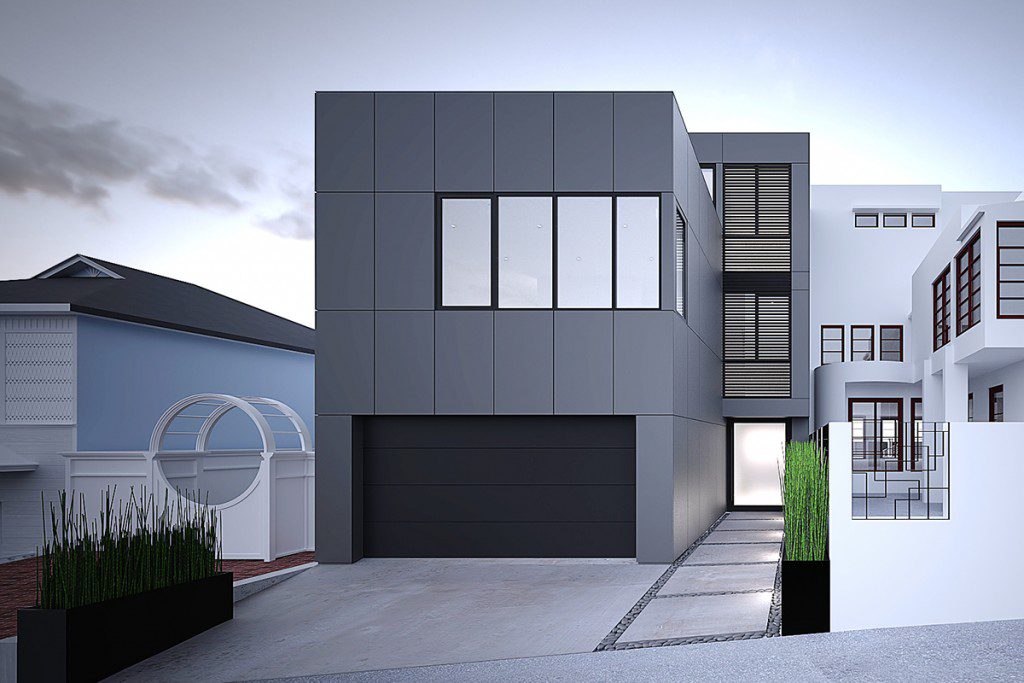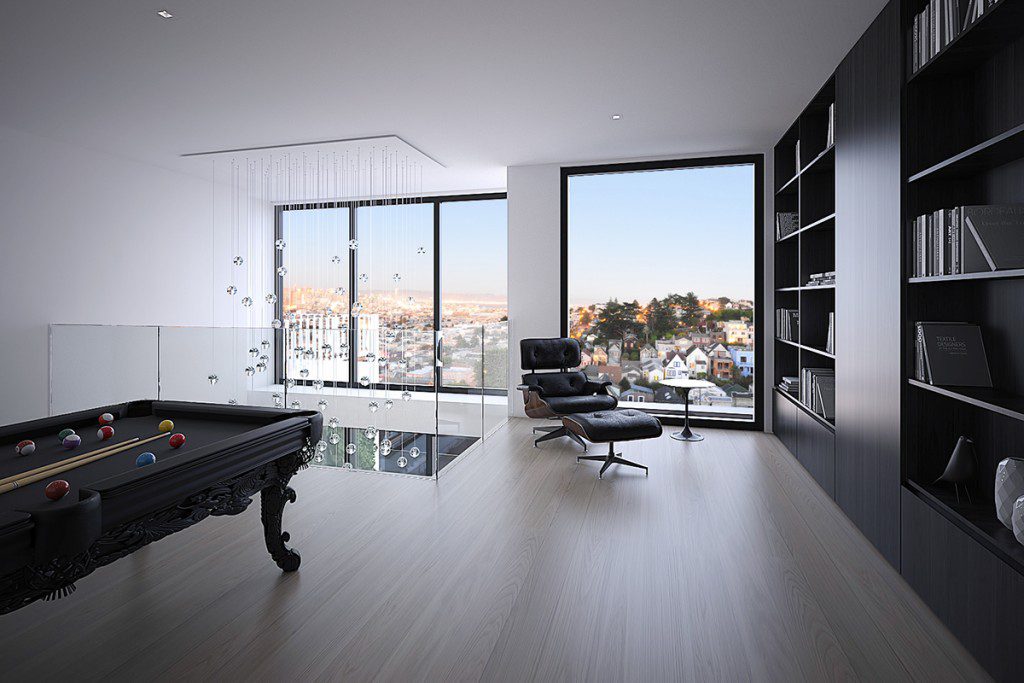The Mission District of San Francisco holds many surprises for the casual pedestrian but few would imagine that five stories above the gritty streetscape sits the studio of one of San Francisco’s most elegant architectural practices.
The architectural firm of Edmonds + Lee has made its home high up in what is the Mission’s tallest building, locally known as the US Bank building (designed in the 60’s by FTM Associates).
Founded in 2005 by partners Vivian Lee and Robert Edmonds, who originally met as grad students at New York’s Columbia University, the practice has really taken off in the last five years with a lot of ground up and large scale commercial works. Today, the office has eight full time architects. Edmonds + Lee bring a different perspective to the table, offering an alternative to a soft modernism with a sharper more tailored look.
We sat down with them in their offices overlooking the city, surrounded by models, material samples and the quiet industry of their design team.

What initially attracted you to your most recent project (Remember House project) and inspired you to do it?
VL. With these clients, we understood each other immediately, it was almost as if we could finish each other’s sentences. This was the same with the space. It was exciting to think about space more than surface. For example, in the master bathroom, we used Corian to create a continuous seamless surface with no visual distraction. Also, with a wonderful GC (General Contractor) involved Devlin/McNally Construction, it becomes a great process and our service and dialogue with the client is enhanced. It’s a synthesis between ourselves, the client and the GC.

Can you share some of the more surprising outcomes that came about?
VL. Well, it’s often how the space feels once it’s been constructed. The rendering and models, plans and elevations are meticulously developed. But even then, when entering the space for the first time, there’s a revelation. Everyone in the office would say the same, the first time you walk in the space it’s like seeing a child being born.

At what point in any given project do you start thinking of furnishings? Is it more of a finishing touch or is it integral to the whole thinking process?
VL. In the very beginning, in the initial space planning, we’re thinking about furnishings. We’re thinking about approach, vistas, sight lines, it’s integral to the design. Personally, I’m often thinking of placing work by Patricia Urquiola but that’s not always my clients cup of tea. As far as aesthetic, this all falls under texture and lighting, it comes really early on. I’m thinking of floor material and wall color at the very beginning.

How does living in Bay Area affect your design practice and your design thinking?
VL. I’m originally from the east coast so it takes a little bit of getting used to because being critical and having and opinion is the norm there. I think the sunshine here makes people have a happier outlook. I think another thing is the whole indoor outdoor relationship here. It really expands the opportunity of architecture and is a very important feature of the lifestyle.
There has, however, been a fundamental change in who is commissioning single family homes. Thirty years ago, the client would have been an older, more conservative character. There’s a new establishment now though, the new power players in the tech world are not just computer programers who write codes, but designers. Now we have people who trained as designers, whose job it is to make a better design environment. They are the people who are becoming our clients. That changes who they employ as architects. They can tell the difference between someone offering minimal service versus a firm that is practicing their craft. That is the arena that we operate the best, we want to work with clients that are in the know.

If you were to give your younger self advice in regards to a career in design, what would it be?
VL. It is a bit of a cliché to quote Steve Jobs these days, but you absolutely have to be passionate about your work because it will make the difference between just doing good work and doing great work.
More work by Edmonds + Lee can be found at:
www.edmondslee.com



